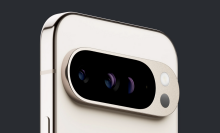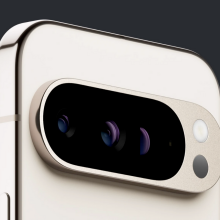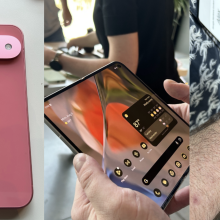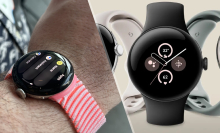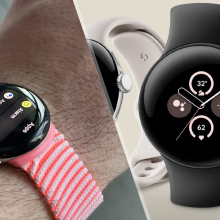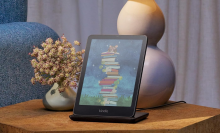After trying out Google's Pixel Buds, I agree with my colleague Karissa Bell when she says the Apple AirPods competitor is the most important gadget the tech company's announced in years.
Never mind the design. You're either going to think they look cool or look cheap. And while that's important, it's the technology inside that I think will change the way we communicate forever. I'm, of course, talking about their real-time translation feature. I just tried them on today and they're (excuse the language) f**king amazing.
Think about your travels to a foreign country. How many times did you use Google Translate to decode the foreign language?
For me it was several times every hour during a recent trip to Japan. I have a limited understanding of Japanese that I learned in college, but the bulk of it has faded into oblivion due to lack of practice.
Pixel Buds take Translate to the next level with real-time translations directly into your ears.
The Google Translate app saved my ass more times than I can remember. It saved me from eating any packaged foods with avocado (yah, I'm deathly allergic) in them. It pointed me in the right direction as I traversed through the labyrinthine underground train stations. It helped me speak to the locals.
Google Translate helps bridge the social and cultural differences, breaking down the invisible borders that once existed.
An app's great, but the Pixel Buds take Translate to the next level with real-time translations directly into your ears. It has the potential to put a lot of interpreters, like those who work at the United Nations, out of jobs in the future.
But I'm not here to yammer about machine learning and AI's threat to humanity (that's for another day). I want to give Google props for taking its powerful translation technology and incorporating it into a consumer product to improve society and pull everyone even closer together.
Tweet may have been deleted
At Google's holiday pop-up shop, I was able to try the Pixel Buds for myself, and test the real-time translation feature.
After some connectivity problems (mostly related to the poor Wi-Fi in the store), the magic happened.
Tweet may have been deleted
With the Pixel Buds in my ears -- I think they're stylish-looking and extremely comfy -- paired to a Pixel 2 phone, and the Google Translate app open, I pressed and held on the right earbud and said in English: "I'm hungry, where should I go eat?"
The app promptly transcribed my sentence, while reading it out loud in French (you can select one of 40 supported languages). A Google staffer tapped a button on the app and said "Je ne sais pas" and I heard the Assistant translate it into my ears as "I don't know."
We went back and forth like this several times and each time I was more impressed. The transcription is speedy and accurate (no surprise considering how good dictation and voice recognition is on Android) and the voice translations in the Pixel buds were clear and audible. The Assistant relaying the translated message sounded natural and human.
Tweet may have been deleted
And that's important because I realized where I was looking, while this magical new phone-earbud translation wizardry was happening: at the other person's face, and not at the phone. Whereas I missed out on reading a person's face expressions while doing a back-and-forth translation strictly through the app, using Pixel Buds gave me back that face-to-face contact.
This human connection felt more intimate and I felt like I was connecting with the other person on a deeper level because there wasn't a language barrier.
Now, the phone app's still necessary for the Pixel Buds to work, but this is a first step towards something greater. One day, we may all just pop in our Pixel Buds and be able to translate directly what the other is saying without any phones.
At $159, the Pixel Buds are a priced to sell.
At $159, the Pixel Buds are priced to sell. They cost as much as AirPods and sound roughly the same (the sound is good, but it's not audiophile-great or anything), look better in my opinion, and you can't lose one of them because there's a nice nylon cable (do not cut it; there's actually electric wiring inside) that connects them together. Pairing them to Pixel phones is just as easy as pairing AirPods to iPhones, too.
For now, the Pixel Buds' real-time translation feature only works with the Pixel phones (first and second generation). They can still pair with iPhones as regular Bluetooth headphones, but iPhones won't get the fancy technology. I pray that one day they'll work properly with iPhones, or else they'll be another game-changing gadget that failed because the devices it supported were too limited. And that would be a real shame because these things are legit straight out of a sci-fi movie.


